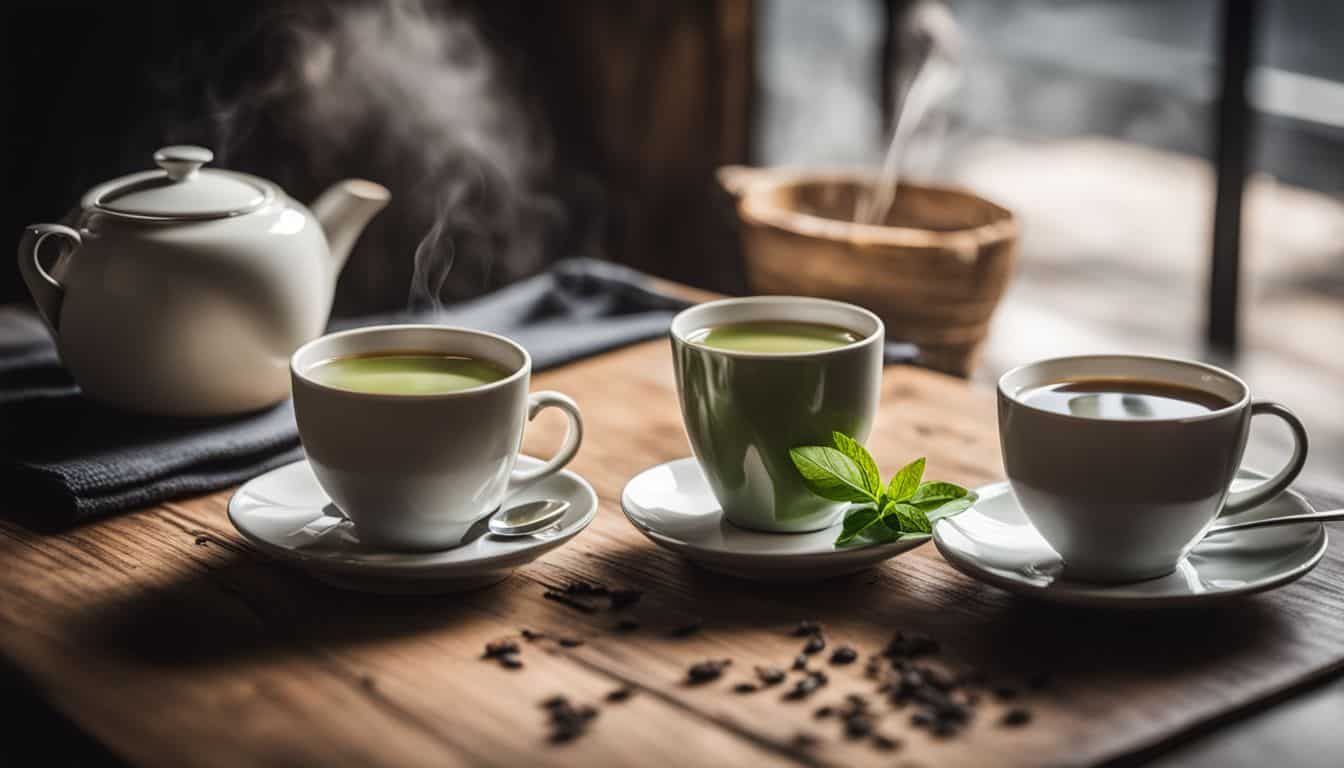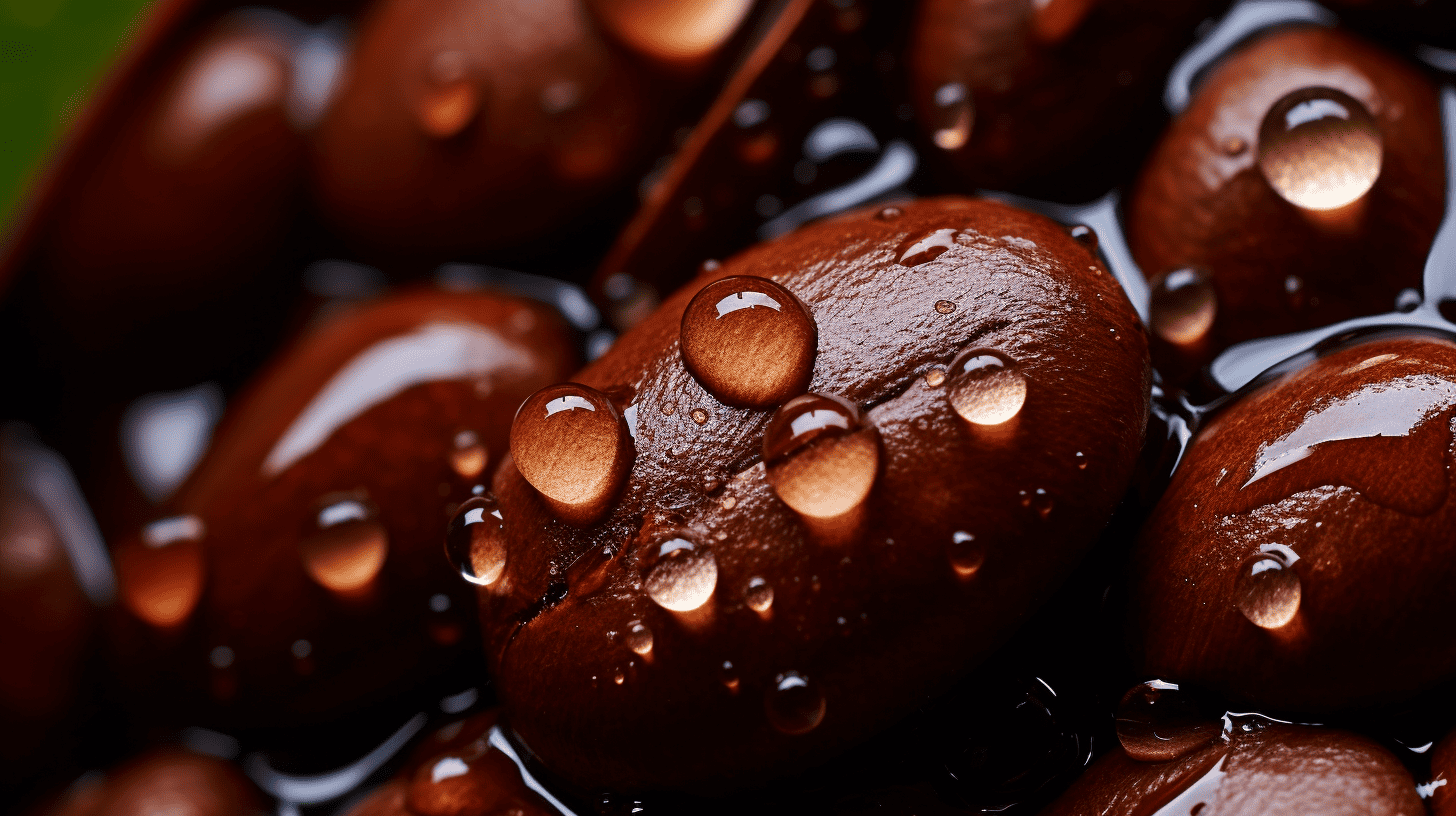Coffee is an essential part of many people’s daily routines. It’s the perfect pick-me-up in the morning or a great way to unwind in the afternoon. But have you ever wondered how much is 1 coffee cup to oz? If you like to measure everything in ounces, you may wonder how much is in a typical coffee cup.
This article will explore the standard coffee cup size and how it relates to ounces. We’ll also discuss measuring coffee by weight versus volume and the factors affecting coffee cup ounces. Plus, we’ll take a look at standard coffee cup sizes around the world and provide tips and tricks for converting coffee cups to ounces. So pour yourself a cup of joe, and let’s get started!
Understanding the Standard Coffee Cup Size
Get ready to learn all about the standard size of your morning beverage! Regarding coffee cups, the standard size in the United States is 8 ounces. This means that a typical coffee cup can hold up to 8 fluid ounces of liquid.
However, it’s important to note that not all coffee cups are created equal. Some may be larger or smaller than the standard size, which could affect the coffee you’re getting per cup.
If you want to measure your coffee intake, knowing the standard coffee cup size of 8 ounces is essential. This will allow you to track how much coffee you consume daily accurately. Additionally, it’s helpful to remember that many coffee shops offer larger cup sizes, which means you could consume more caffeine than you realize.
By understanding the standard coffee cup size and paying attention to the size of your cups, you can make informed decisions about your caffeine intake and ensure that you’re getting the right amount of coffee per cup. I have included a measurement calculator here.
Key takeaways of understanding the standard coffee cup size:
- Coffee cup sizes typically range around 8 ounces, although this can vary depending on the location or establishment.
- Any specific authority doesn’t set a universally accepted standard coffee cup size.
- Despite most standard coffee mugs having a capacity of a range around 8 ounces, the average coffee cup size is actually 6 ounces.
- In the U.S., regular coffee cups can hold 8 to 12 ounces. Extra-large mugs can contain as much as 20 to 25 ounces.
- The most favored sizes are the 12-ounce “tall” and the 16-ounce “grande.”
Measuring Coffee by Weight vs. Volume
You’ll want to consider weighing your coffee instead of measuring by volume to achieve the perfect brew. Measuring coffee by volume, such as using a standard coffee cup, may not always result in a consistent cup of coffee. This is because different coffee beans have different densities, which can affect the volume of coffee in a cup. This can lead to an inconsistent taste and strength of the brew.
On the other hand, weighing coffee is a more precise method of measuring your coffee. You can use a kitchen scale to measure the exact amount of coffee you need for your preferred brew strength. This method ensures you have the correct coffee-to-water ratio every time, resulting in a consistent and delicious cup of coffee. Additionally, weighing your coffee allows you to experiment with different brew strengths and ratios to find the perfect cup of coffee for your taste buds. Overall, weighing your coffee is a simple way to improve the consistency and quality of your daily cup of joe.
Factors that Affect Coffee Cup Ounces
| Factor | Explanation |
|---|---|
| Coffee Grind Size | The size of the coffee grind influences extraction speed, thereby impacting the coffee’s strength and taste. Finer grinds lead to a stronger brew, while coarser grinds yield a milder one. |
| Additions | Incorporating milk, sugar, or other flavorings into coffee can raise its calorie content and alter its flavor and texture. |
| Cup Size | The serving cup’s size can affect the quantity of coffee consumed and the overall coffee-drinking experience. Coffee might taste stronger in smaller cups and weaker in larger ones. |
| Brewing Method | The method of brewing, like drip, French press, or espresso, can change the coffee’s strength, taste, and texture. |
| Water Temperature | The brewing water’s temperature can influence extraction speed and the coffee’s overall taste. Overly hot water may yield bitter coffee, while too cold water can produce a weak brew. |
Understanding the various factors that impact the total volume of your brewed coffee can help you achieve a more consistent and enjoyable drinking experience. One of the main factors that affect coffee cup ounces is the type of coffee bean you use. Different coffee beans have different densities and moisture levels, which can significantly impact the amount of water they absorb during brewing. For example, a dark roast coffee bean will typically weigh less per volume than a light roast coffee bean, resulting in a higher yield of coffee cup ounces.
Another factor that can impact the total volume of your brewed coffee is the brewing method you use. Each brewing method has its unique set of variables that can affect the final volume of your coffee. For instance, a French press may yield a slightly lower volume of coffee cup ounces compared to a drip coffee maker due to the prolonged steeping time. Additionally, the grind size and water temperature used during the brewing process can also impact the final volume of your brewed coffee. By understanding these various factors, you can make adjustments to your brewing process to ensure a consistent and satisfying cup of coffee every time.
Common Coffee Cup Sizes Around the World
It’s fascinating to see the different coffee cup sizes worldwide and how they reflect cultural preferences and traditions. In the United States, the standard coffee cup size is 8-12 ounces, with some places even offering 16-20 ounce cups. This large size is often seen as a symbol of convenience and speed, as Americans tend to be on the go and want their coffee quickly. In contrast, in Europe, the standard coffee cup size is much smaller, ranging from 4-6 ounces. This smaller size is seen as a nod to tradition and the idea of savoring the moment rather than rushing through it.
In some parts of the world, coffee cups are not even used. In the Middle East and North Africa, coffee is often served in small, handleless cups called “demitasse.” These cups are about the size of a shot glass and are meant to be sipped slowly and enjoyed with friends and family. In Asia, coffee is often served in small cups, but the preparation method and flavor profile are often quite different from what is found in the West. Overall, the other coffee cup sizes used worldwide offer a glimpse into the unique cultures and traditions that make up our global community.
Converting Coffee Cups to Ounces or Milliliters: Tips and Tricks
Ready to take your coffee game to the next level? Now you can easily convert the size of your favorite coffee cups into ounces with these simple tips and tricks. First, it’s important to remember that coffee cups can vary in size depending on where you are in the world, so it’s always best to measure your own cup to get an accurate conversion.
Once you have your cup size, converting it to ounces is pretty straightforward. A standard coffee cup in the United States is usually around 8 fluid ounces, but this can vary. To convert this from ounces to milliliters, multiply by 29.57 per ounce. So, an 8-ounce coffee cup is equivalent to 236.588 milliliters. Remember that this conversion works for fluid ounces, not weight ounces, so if you’re measuring out your coffee beans, you’ll need to use a kitchen scale instead.
Frequently Asked Questions:
What is the difference between fluid ounces and regular ounces?
Fluid ounces and regular ounces are often confused with each other due to their similar names. However, they are actually different units of measurement. Regular ounces, also known as avoirdupois ounces, are used to measure weight and are commonly used in the United States. On the other hand, fluid ounces are used to measure volume and are commonly used for liquids. One fluid ounce is equal to approximately 0.125 regular ounces. It’s important to understand the difference between the two, especially when it comes to cooking and baking, where precise measurements can make a big difference in the outcome of a recipe.
How much caffeine is typically found in a cup of coffee?
The caffeine content in a cup of coffee can vary depending on various factors, such as the type of coffee bean, the brewing method, and the serving size. On average, an 8-ounce cup of brewed coffee contains around 95 milligrams of caffeine. However, this can range from as little as 30 milligrams to as much as 200 milligrams or more. It’s important to note that consuming too much caffeine can lead to adverse effects such as jitteriness, anxiety, and difficulty sleeping. Limiting caffeine intake to no more than 400 milligrams per day, or about 4 cups of coffee is recommended.
What is the ideal temperature for brewing coffee?
The ideal temperature for brewing coffee is between 195°F and 205°F. This range allows for the proper extraction of the coffee’s flavors and aromas without burning or over-extracting the beans. It’s important to note that the temperature of the water can greatly impact the taste of your coffee, so investing in a reliable thermometer is key. Additionally, different brewing methods may require slightly different temperatures, so it’s worth experimenting to find the perfect temperature for your favorite brewing method.
How long should coffee beans be roasted for optimal flavor?
Roasting coffee beans is a crucial step in the coffee-making process that greatly affects the final product’s flavor. For optimal flavor, it is important to roast the beans for the right amount of time. Generally, light roasts are roasted for about 10-12 minutes, medium roasts for 12-15 minutes, and dark roasts for 15-18 minutes. However, the exact time can vary depending on the type of bean and personal preference. It is important to monitor the beans closely during the roasting process to ensure they do not over-roast, which can result in a burnt taste. By roasting beans for the optimal amount of time, coffee lovers can enjoy a flavorful and satisfying cup of coffee.
What is the difference between a latte and a cappuccino?
A latte and a cappuccino are two popular espresso-based drinks that differ primarily in their milk content and preparation. A latte typically consists of a shot of espresso with steamed milk and a small layer of foam on top. The milk to espresso ratio is higher in a latte, resulting in a creamier and milder taste. On the other hand, a cappuccino is made with equal parts espresso, steamed milk, and foam. The foam in a cappuccino is thicker and drier, and the drink has a stronger espresso flavor than a latte. Both drinks can be customized with flavored syrups and toppings, such as whipped cream or cinnamon, for added sweetness and aroma.
Conclusion
So, how much is 1 coffee cup to oz? The answer isn’t straightforward, as it depends on a variety of factors such as the standard size of the coffee cup, the type of coffee being measured, and the measuring system being used. However, with some knowledge and simple conversions, you can easily determine the number of ounces in your coffee cup.
Whether you’re a coffee lover or just looking to measure out your daily dose of caffeine, understanding the conversion from coffee cups to ounces is an important skill to have. With the information and tips outlined in this article, you can confidently measure out your coffee and enjoy the perfect cup every time.





Leave a Reply